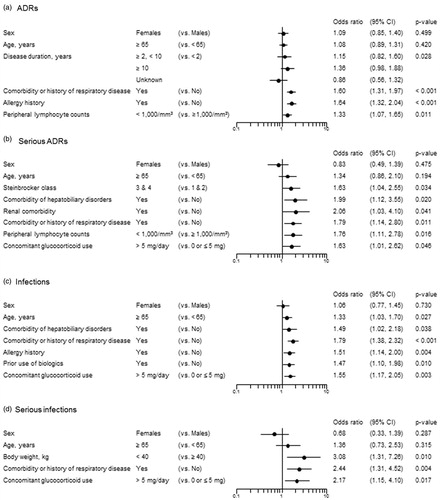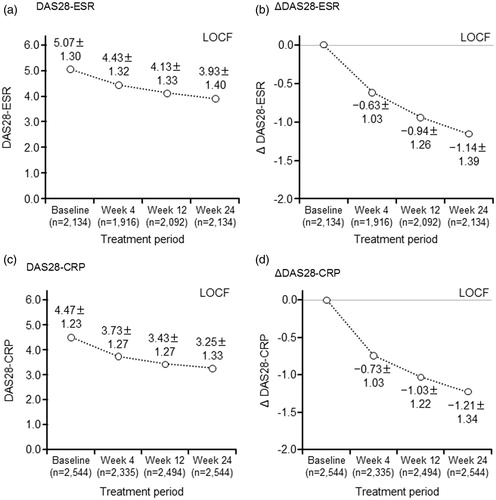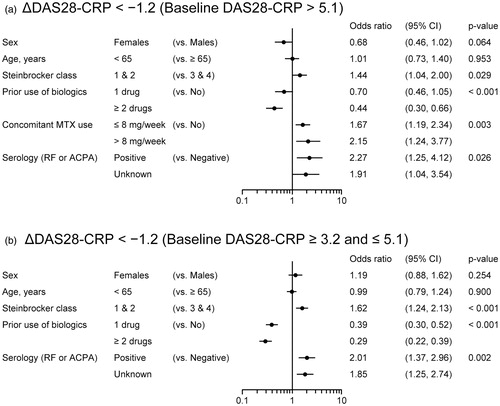Figures & data
Table 1. Patient demographic and clinical baseline characteristics.
Table 2. Incidence rates of the most commonly reported adverse drug reactions (≥0.5%).
Table 3. Summary and incidences rates of adverse drug reactions of interest.
Figure 1. Multivariate logistic regression analysis revealed risk factors for all (a) ADRs, (b) serious ADRs, (c) infections, and (d) serious infections. Candidate variables for multivariate analysis were selected among many others based on their degree of clinical significance and the results of the univariate analysis. Variable selection for the final model of the multivariate logistic regression analysis was performed by stepwise methods.

Figure 2. Change in disease activity over time in patients treated with abatacept. The last-observation-carried-forward (LOCF) imputation method was used. (a) DAS28 based on erythrocyte sedimentation rate (DAS28-ESR). (b) DAS28-ESR changes. (c) DAS28 based on C-reactive protein (DAS28-CRP). (d) DAS28-CRP changes.

Figure 3. Multivariate logistic regression analysis revealed factors associated with improved DAS (DAS28-CRP51.2) in patients with (a) baseline DAS28-CRP45.1, and (b) baseline DAS28-CRP3.2 and 5.1. Candidate variables for multivariate analysis were selected among many others based on their degree of clinical significance and the results of the univariate analysis. Variable selection for the final model of the multivariate logistic regression analysis was performed by stepwise methods.

